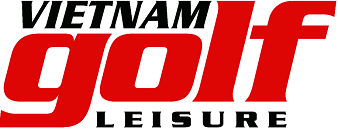Types of Grass on Golf Courses
Apart from a vast expanse of land, of course, the grass is the next biggest and arguably most important part of a golf course. Did you know that the type of grass grown on a golf course determines the level of play you’ll experience playing golf on it? Choosing the right type requires a lot of thought and consideration.
Golf course grass is commonly known as turf grass (which is typically tough, fast-repairing grass that can withstand plenty of traffic), and the grass types used differ from region to region by their ability to withstand both cold and heat. Different grass may also be used on the tee box, fairway and greens.
Suppose you’re a golf course owner, golf player, or even a lawn owner looking to grow some turf grass in your home and enjoy its many benefits. In that case, this article where I’ll show you some of the different golf course grass you should know!
Bentgrass
Bentgrass is a super durable turf grass, and is one of the most popular types of grass planted on golf courses. Bentgrass belongs to the herbaceous family of perennials, grassy stems close to the ground and strongly branched.
Perhaps the main reason for its popularity is its thick, mat-like appearance, which can be mowed lower to improve the game experience. Bentgrass can grow very well in tropical climates. Unfortunately, Bentgrass cannot withstand hot conditions. Bentgrass offers the best performance in the evening and at night when it experiences the least stress.
In Vietnam, many golf courses use this grass because of its convenience. However, this grass is quite hard and reduces the roll of the ball, so many places do not allow them to be used on fairways and greens.
Bermuda
Drought-like conditions, extreme heat, high humidity, and little shade may sound catastrophic for other grass types, but not Bermuda Grass. It’s highly preferred for its survival against harsh conditions.
Bermudagrass has a 30cm crow's foot-shaped root structure, the root system is extremely strong and grows in blocks, so the grass will not peel off during sports activities. Leaves are small and smooth, and do not prevent the ball from rolling. Grass has great impact resistance, high growth and development capacity.
Not only is Bermuda suitable for warm regions, but it can also be mowed quite low, which is necessary for golfers to truly enjoy the experience, and it can also be used to create obstacles on the golf course.. Bermuda, however, will die in colder regions or when the weather gets too cold. Bermuda is best suited to southern climates where the temperature is higher, and the possibility of drought is higher.
Perennial Ryegrass
Perennial Ryegrass grows well in areas with cool summers. Like Bermudagrass, this golf course grass also grows in blocks. For tight and hole-free mulch, Perennial Ryegrass needs to be planted densely.
Perennial ryegrass, an all-time favorite turfgrass, can be found in almost every cool-summer region. It’s an ideal type of turf for tee boxes and fairways, thanks to its fine texture and growth nature. This type of grass allows for striping and other aesthetically pleasing designs on the turf, and its upright growing position creates less friction on the green.
When it is adequately fertilized, you can clearly see its smooth texture and dark green color. However, perennial ryegrass does not spread through the rhizomes like many other types, so it may require a little more work to spread it.
Zoysia
Zoysia is a native Asian grass, and can be used in a wide range of climates, except for the desert-like conditions and cold regions. The grass grows deep and grows in very strong clumps, forming a thick carpet-like cover.
Because of its range, zoysia is a popular choice throughout the country. This grass, which is a member of the poa family, is characterized by its deep roots and fine color. The blades are fine and may be mowed to 3/4 of an inch. Zoysia is often used on municipal courses.
Zoysia grass is easy to care for, the maintenance is also low cost, the plant's relatively high drought tolerance is very suitable for the climate in the hot and humid monsoon region in Southeast Asia. However, this grass grows relatively slowly, so it is not popular on golf courses like Bentgrass or Bermudagrass.
Poa Annua Grass
This grass is not so common as the rest on this list because it is an invasive species, but this type of grass is loved for its breathtaking color on a wide scale.
Poa annua is a low-growing grass, making it suitable as a turf grass and grows best in temperate regions. A major draw-back to this grass type is its shallow root, which makes it less durable and difficult to manage in your lawn as it needs enough water to continue to give you its beauty.
Artificial grass
Artificial grass is cheaper than natural turf and requires less maintenance. With artificial turf, you don't have to spend a lot of money to hire workers, artificial turf is easier to install and requires less initial investment than natural turf. For these reasons, artificial turf is increasingly favored.
Today, there are many types of artificial golf grass, but the most popular among them are KM 13-25 grass and Green HF 12 grass. These two types differ in density and spacing. Depending on the terrain, investors choose the right type of grass.

















